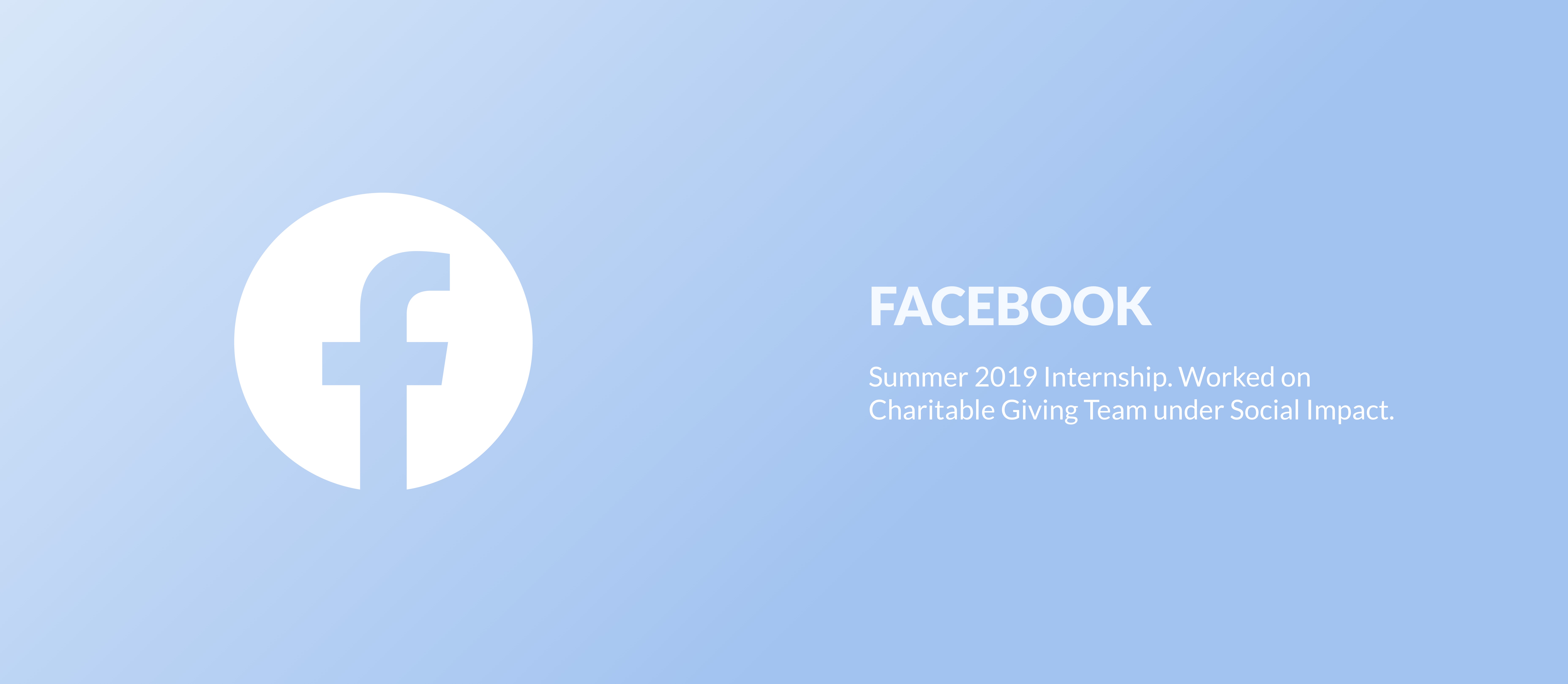Overview
I was on the Charitable Giving Team working on the fundraiser sticker in Facebook Stories to improve its discoverability and interactivity. While my work is under NDA, here I'm sharing some takeaways from this internship experience.
Key Takeaways
Share work early and constantly
It might be a little intimidating to show early designs and ideas, but it’s the stage where feedback is the most valuable and impactful for the overall designs. For a new designer who just joined the team, it’s also a great opportunity to learn more about the existing patterns or explorations of the products from other experienced designers. During the internship, I showed my designs in our weekly design critiques and I always learned the most by presenting works and receiving immediate, juicy feedback. Being open to feedback also helped me iterate more rapidly with an intentionality in mind.
Take a step back and reflect often
Sometimes it’s easy to get too focused on one interaction or design and forget about how it would actually fit into the overall flow. I fall into that trap from time to time; therefore, whenever I find myself spending too much time on one thing, I go take a walk. Coming back with a refreshed mind, it’s the best time to review the problem I’m trying to solve and reflect on the designs I have: What’s the entire user flow like? How does this design address the problem? What are some possible edge cases? Taking a step back and revisit the problem from a broader perspective helps me focus on problem-solving, not just how the design looks and feels.
Be intentional
Last but not least - what is your rationale? The takeaways mentioned above both contribute to a mindset of designing with intentionality. Every design decision has a reason beyond “looking good”. It’s important to think through why you design in this certain way and what are the trade-offs. Understanding user behavior (from research), patterns, or metrics is an effective approach to intentional design. I had the opportunity to work with the user researcher on my team and observed some research sessions. It offered great insights on people's attitudes and further helped shape and validate my designs.

